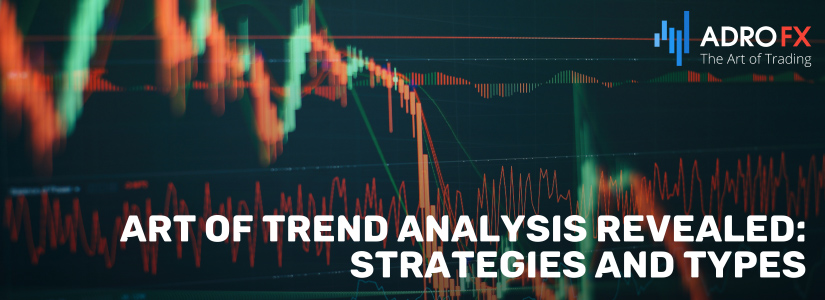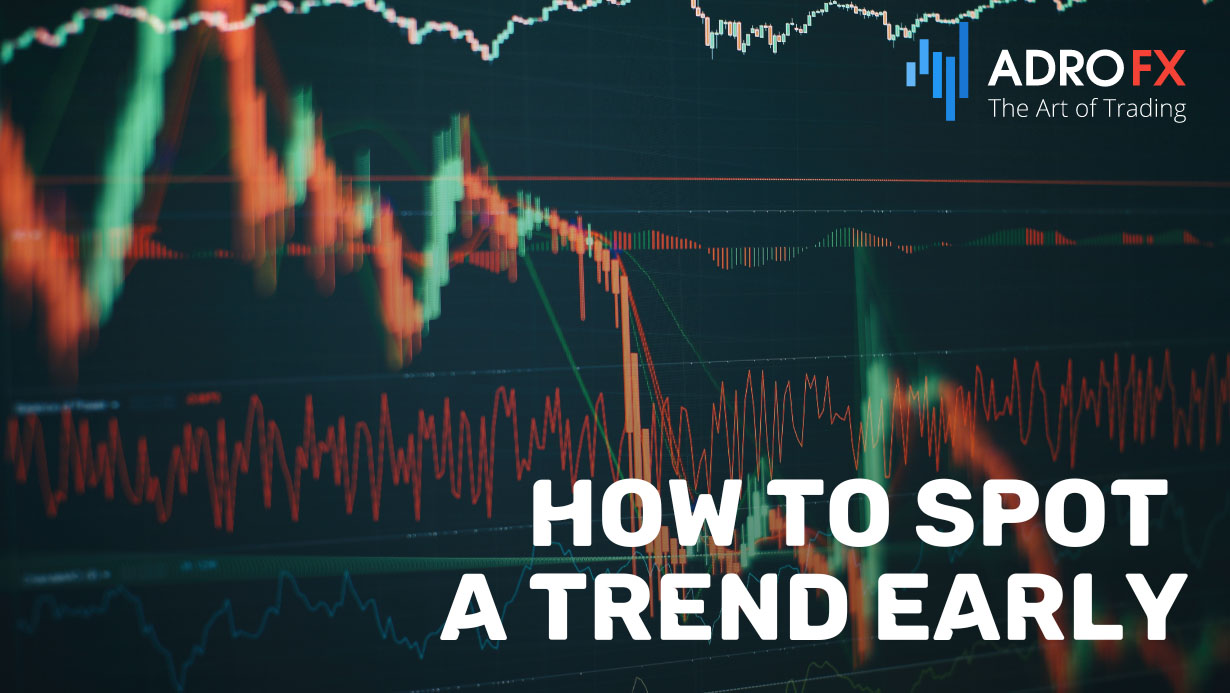Art of Trend Analysis Revealed: Strategies and Types

Trends are the pulse of financial markets, dictating the trajectory of asset prices and influencing trading decisions. In the financial world, traders and investors encounter three fundamental types of trends: uptrends, downtrends, and sideways trends. Each of these trends possesses its unique characteristics, impacting market behavior and participant strategies. To thrive in the ever-evolving financial landscape, it's crucial to comprehend these trends and employ the right strategies that align with them.
From there, we'll delve into various trend-following strategies, exploring the diversity they offer, and how they cater to different trading styles and asset classes. By understanding these strategies, traders can capitalize on market trends, potentially enhancing their success in the dynamic realm of financial markets. Whether you are an equity trader, a currency market enthusiast, or a cryptocurrency investor, trend-following strategies can serve as valuable tools in your financial journey.
Exploring Different Types of Trends in Financial Markets
Trends are the heartbeat of financial markets, defining the course of asset prices. In the world of finance, there are primarily three notable types of trends that traders and investors encounter: uptrends, downtrends, and sideways or range-bound trends. Each type carries its own characteristics and implications for market participants.
- Uptrend (Bullish Trend)
An uptrend, often known as a bullish trend, signifies a consistent ascent in asset prices. During an uptrend, the market is marked by a series of higher highs and higher lows, demonstrating an increasing optimism among investors. This type of trend is akin to a staircase, where each step takes the market to higher price levels. For traders, an uptrend presents opportunities to go long, anticipating further price appreciation. Strategies often involve buying assets when they are on an upward trajectory, with the expectation that the trend will persist. - Downtrend (Bearish Trend)
In contrast, a downtrend, or bearish trend, manifests when asset prices are in a continuous decline. Within a downtrend, lower highs and lower lows emerge, reflecting a growing pessimism in the market. The downtrend is like a descending staircase, where each step takes prices to lower levels. For traders and investors, this type of trend suggests opportunities to short or sell assets, expecting further price depreciation. Strategies may involve selling assets when their prices are on a downward path, with the anticipation that the trend will endure. - Sideways or Range-Bound Trend
Sometimes, financial markets find themselves in a state of equilibrium, characterized by a sideways or range-bound trend. In such periods, asset prices fluctuate within a horizontal range, without a clear inclination towards upward or downward movement. This type of trend symbolizes a balance between buyers and sellers, resulting in a trading environment with less distinct trends. Traders in a range-bound market seek to capitalize on price oscillations within the defined range, often employing range trading strategies. They buy near the lower boundaries and sell near the upper boundaries, benefitting from these price cycles.
These three fundamental types of trends - uptrends, downtrends, and sideways trends - are pivotal in the decision-making processes of traders and investors. Recognizing the specific trend they are dealing with is essential for formulating effective trading strategies. Whether it's the optimism of an uptrend, the caution of a downtrend, or the adaptability of a sideways trend, understanding and adapting to these trends is integral to success in the financial markets.

Advantages of Trend Following
The trend-following strategy offers numerous advantages for traders and investors. One of the most appealing aspects is the potential for high returns. Historically, trend-following has proven to be a lucrative approach, with traders earning substantial returns by identifying and participating in significant trends. A prominent example of this is the period following the global financial crisis when those who bought stocks during the recovery phase witnessed remarkable returns.
Comparatively, trend-following is often considered a superior strategy when compared to trading reversals. It entails buying or shorting assets in alignment with the existing trend, a concept that has been widely successful.
Furthermore, one of the key benefits of trend-following is the potential for reduced risks. Although all trading strategies inherently carry risks, trading within the framework of an established trend can help minimize exposure to some of the more pronounced risks associated with other trading approaches.
However, it is important to note that the primary risk in trend-following is the possibility of a reversal occurring. Traders employing this strategy may find themselves buying or shorting a trending asset, only to witness an unexpected reversal. Therefore, while the risks are generally lower, there is still a potential for significant setbacks.
Ways to Analyze a Trend
Traders employ various methods to identify and analyze trends in financial markets, enabling them to make informed investment decisions. These methods provide valuable insights into market sentiment and potential future price movements.
One common approach involves utilizing technical indicators, such as moving averages, the Relative Strength Index (RSI), and the Moving Average Convergence Divergence (MACD). These tools analyze historical price data to generate signals based on mathematical calculations. Traders rely on these signals to identify patterns and trends, allowing them to build effective trading strategies.
Another method is to recognize chart patterns by studying price charts. Traders often observe recurring patterns, such as head and shoulders, double tops, or ascending triangles. These patterns offer valuable insights into market dynamics and can assist traders in spotting early trends.
Additionally, fundamental analysis plays a crucial role in identifying trends. This approach involves analyzing economic data, company financials, news events, and other factors that may influence the market. By assessing these fundamental factors, traders can gain a better understanding of potential trends.

How to Spot a Trend Early
Utilizing the Relative Strength Index (RSI) is a popular strategy for identifying trends. Traders often use oscillators like the RSI to locate potential buying and selling zones. During significant sell-offs, a buy signal often emerges when the RSI moves into the oversold territory. Conversely, during a major rally, a sell signal may surface when the RSI reaches the overbought level.
Another approach is to use the 50-day exponential moving average (EMA) on a daily chart to spot long-term trends early. Following a major sell-off, a buy signal materializes when the asset's price moves above this moving average. This indicator suggests increasing demand for the financial asset, although it may exhibit a slight delay.
An essential strategy for trend spotting is through correlations. Examining the relationships between different assets, such as currencies and stocks, can provide valuable insights. Some assets have a history of moving in tandem, which means that a breakout in one asset may foreshadow a breakout in another. Identifying such relationships can be a powerful tool for identifying trends.
Chart patterns are a reliable way to recognize early trends. Two common patterns are flags and pennants. Flags represent small parallel channels that emerge within an existing trend, while pennants are small triangle patterns found in the midst of a trend. These patterns often arise as traders question the strength of the trend, indicating that a trend may continue after a consolidation phase.
Candlestick patterns offer yet another approach for identifying early trends. Patterns like bullish and bearish engulfing patterns, hammers, morning and evening star patterns, among others, can provide valuable insights. For example, the formation of a hammer pattern as a new trend begins is a strong signal for traders.
By employing these strategies, traders can spot trends early, leading to more informed investment decisions and potentially higher returns. These methods help traders navigate the complex and ever-changing world of financial markets with greater confidence.
Types of Trend-Following Strategies
Trend-following strategies are diverse and adaptable, catering to various trading styles and asset classes. These strategies all share a common goal: capitalizing on market trends. Here, we delve into some of the most prominent types of trend-following strategies employed by traders and investors.
- Moving Averages
Moving averages are a fundamental tool in trend-following. Traders use different types of moving averages, such as simple moving averages (SMA) and exponential moving averages (EMA), to identify trends. The crossover of shorter-term and longer-term moving averages can signal potential entry and exit points in the market. - Trend Following Indicators
These indicators are designed explicitly to help traders identify trends. Examples include the Moving Average Convergence Divergence (MACD), the Average Directional Index (ADX), and the Parabolic SAR. Each of these indicators offers unique insights into market momentum and trend strength. - Breakout Strategies
Breakout strategies involve identifying key levels of support or resistance and placing trades when the price breaks through these levels. Traders often use chart patterns like flags, triangles, or channels as breakout indicators. - Price Action Trading
Price action trading is centered on analyzing the price movement itself, focusing on patterns, candlestick formations, and key price levels. Traders who employ this strategy aim to identify trends based on pure price dynamics. - Trend Following in Commodities and Currencies
Commodity and currency markets frequently see extended trends, making them attractive for trend-following strategies. Commodity trading advisors (CTAs) often use trend-following methods in these markets. - Algorithmic and Quantitative Trading
Quantitative and algorithmic traders develop complex systems that automatically detect and follow trends. These systems use mathematical models and historical data to execute trades at optimal times. - Trend Following in Cryptocurrencies
Cryptocurrencies, known for their volatility, have attracted trend followers seeking to capitalize on their price movements. These traders use various indicators and strategies to navigate this unique asset class. - Trend Following with Diversified Portfolios
Some traders divearsify their trend-following strategies across multiple asset classes and markets. This approach aims to spread risk and enhance returns by capturing trends in various financial instruments.
Understanding the diverse range of trend-following strategies empowers traders to choose the methods that best align with their trading goals and risk tolerance. The flexibility of these strategies makes them a valuable tool in the dynamic world of financial markets.
Conclusion
In the intricate world of financial markets, mastering the art of trend analysis is paramount. Understanding uptrends, downtrends, and sideways trends equips traders with the foundational knowledge required to navigate the complexities of market behavior. By recognizing and adapting to these trends, traders can formulate effective strategies that align with specific market conditions.
Furthermore, exploring a range of trend-following strategies provides traders with a versatile toolkit to capitalize on opportunities across various asset classes. Whether through moving averages, trend-following indicators, breakout strategies, or price action trading, traders can tailor their approach to suit their objectives. By mastering these strategies, traders can navigate the ever-changing financial landscape with confidence, potentially enhancing their potential for success.
About AdroFx
Established in 2018, AdroFx is known for its high technology and its ability to deliver high-quality brokerage services in more than 200 countries around the world. AdroFx makes every effort to keep its customers satisfied and to meet all the trading needs of any trader. With the five types of trading accounts, we have all it takes to fit any traders` needs and styles. The company provides access to 115+ trading instruments, including currencies, metals, stocks, and cryptocurrencies, which make it possible to make the most out of trading on the financial markets. Considering all the above, AdroFx is the perfect variant for anyone who doesn't settle for less than the best.










